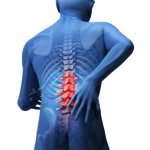Relief Without Surgery
Home remedies, adequate rest, non-steroidal anti-inflammatory drugs, and hot and cold treatment can be effective for relief without surgery.
If back pain persists after following the methods as described in this article, then it is advisable to consult a physician, especially those at spine clinics who are specialized in non-surgical treatments. Home remedies, physical therapies, exercises, and muscle relaxants can be useful for back pain relief. In cases of chronic back pain, Cortisone injections can bring relief, while X-Rays and MRIs can detect the nature of spinal injury.
There can be a limited outcome after surgery, and the time taken to recover may be quite long. Keeping to a traditional treatment is a better alternative for back pain relief.
Relief Without Surgery
The article below compiles the latest information on a variety of non-drug pain-relieving therapies and their applications to a number of common types of pain.
Fortunately, with home treatment and rest, many cases of back pain get better within a few weeks without any long-term problems. Taking a nonsteroidal anti-inflammatory drug — such as ibuprofen or naproxen — or other over-the-counter pain medications, applying heat and/or ice to the painful area along with rest, can often effectively get rid of back pain.
If low back pain does not go away after several weeks despite these remedies, see a doctor to rule out a serious underlying problem. If possible, make an appointment with a specialist who has expertise in spine care. Many academic medical centers have spine clinics or pain centers that specialize in nonsurgical treatment for low back pain. These clinics are a good place to start when looking for treatment of low back pain that lasts.
Treatment for chronic low back pain often involves the same home remedies mentioned earlier, as well as physical therapy and exercises. In addition, if over-the-counter pain relievers are not enough to help with low back pain, a prescription muscle relaxant may be useful, as well as additional prescription pain medications. In some cases, when other measures do not get rid of pain, your doctor may recommend an injection of cortisone — an anti-inflammatory medication — into the space around the spinal nerve roots or spinal joints to help lessen inflammation and decrease pain. For most people with low back pain, these nonsurgical therapies will provide the best, longest-lasting pain relief.
If your doctor suspects that a structural problem in the spine may be the source of your low back pain, tests such as plain X-rays, magnetic resonance imaging (MRI), computerized tomography (CT) scans and special spine injections can be used to determine the source of pain and to help predict how helpful spine surgery is likely to be. If tests show that surgery may be appropriate, spine surgery for low back pain often involves either joining two vertebrae together in a procedure known as spinal fusion, or removing a spinal disk and replacing it with an artificial one. But the exact type of surgery depends on the cause of the pain.
Even when an individual is a good candidate for surgery to treat low back pain, the outcomes following surgery are only moderately encouraging at best. In addition, spine surgery requires significant recovery time. With these factors in mind, people considering surgery for low back pain should carefully discuss the risks and benefits with their health care team before deciding to proceed.
Overall, the best thing you can do for low back pain is take care of your back. Regular exercise that strengthens your core by working the back, stomach and flank muscles can help build back strength and flexibility, lowering your risk of injury. Maintaining a healthy weight can help prevent back pain by reducing the overall load on your back. Using proper body mechanics when you sit, stand and lift may also prevent back problems.
Traditional methods of treatment for relief without surgery are always the best alternative. These include various remedies or therapies, exercises, non-steroidal anti-inflammatory drugs, and heat and cold applications, which can be effective as compared to surgery. Surgical treatment is painful. It may not significantly improve your back pain, surgery comes with its risks, and it can take a long time to recover.
The best thing to do for back pain relief is regular exercise to strengthen the core muscles of the back and abdomen to bring flexibility. Maintaining a healthy weight, which is easier said than done, and proper posture are also important for getting maximum relief from back pain while taking minimum injury risk.
Learn about how to relieve low back pain and sciatica without back surgery. Basics of back pain relief guide by backpainhelptoday.com
Dr. Peter Cox from Dynamic Health and Pain Management discusses spinal decompression therapy and plant based injections in this news video.
You might also like:
Tags: relief without surgery















